 |
by Rich Brueckner on (#3BGN1)
Today Ace Computers announced four leading-edge OpenStack applications for clusters, servers and workstations. Although the company has been working with top open source application providers for decades—this is the first announcement of an offering portfolio that includes Red Hat, SUSE, Bright Computing and CentOS. "We have the advantage over most of our competitors of decades-long partnerships with many platform developers," said Ace Computers CEO John Samborski. " These strong relationships give us access to leading-edge innovations and expertise that allow us to build the best possible solutions for our clients.â€The post Ace Computers Offers OpenStack Solutions appeared first on insideHPC.
|
 Inside HPC & AI News | High-Performance Computing & Artificial Intelligence
Inside HPC & AI News | High-Performance Computing & Artificial Intelligence
| Link | https://insidehpc.com/ |
| Feed | http://insidehpc.com/feed/ |
| Updated | 2025-12-14 22:16 |
 |
by Rich Brueckner on (#3BGBY)
Theresa Windus from Iowa State University gave this Invited Talk at SC17. "This talk will focus on the challenges that computational chemistry faces in taking the equations that model the very small (molecules and the reactions they undergo) to efficient and scalable implementations on the very large computers of today and tomorrow. In particular, how do we take advantage of the newest architectures while preparing for the next generation of computers? "The post Video: Taking the Nanoscale to the Exascale appeared first on insideHPC.
|
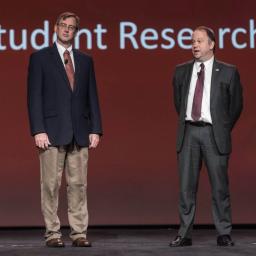 |
by staff on (#3BE5D)
In this video from SC17, Jeff Hollingsworth and Paul Hovland host the Conference Finale Event announcing the winners of the Best Paper, Best Poster, ACM Gordon Bell Prize, Student Cluster Challenge and other honors for our technical program. "The conference drew 12,753 attendees and featured a technical program spanning six days – marking the second largest SC conference of all time."The post SC17 Awards Ceremony and Conference Recap appeared first on insideHPC.
|
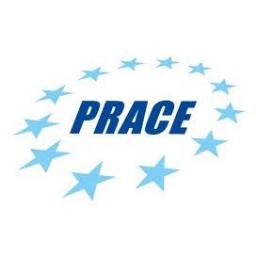 |
by staff on (#3BE2K)
The European Partnership for Advanced Computing in Europe (PRACE) is expanding to make its programs and training offerings more accessible for university students and faculty members. "The Outreach to Universities program is the one-stop shop where the latest student-centric information on programs, educational opportunities and more can be found."The post PRACE Launches Outreach to Universities Program appeared first on insideHPC.
|
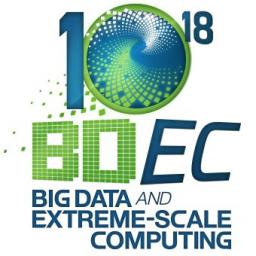 |
by staff on (#3BE2M)
“The tremendous progress that we’re making toward the achievement of exascale systems, both here in the United States and in the European Union and Asia, will be undermined unless we can create a shared distributed computing platform to manage the logistics of massive, multistage data workflows with their sources at the network edge. Backhauling these rivers of data to the supercomputing center or the commercial cloud will not be a viable option for many, if not most applications.â€The post Report: Future Software and Data Ecosystem for Scientific Inquiry appeared first on insideHPC.
|
 |
by Rich Brueckner on (#3BDX9)
In this video, Staffan Hansson from AdvaniaDC chats with Wolfgang Gentzsch from The UberCloud about the award-winning Stanford Living Heart Project, how the partnership was so successful, and his thoughts on HPC in the cloud and what it means for the future of research. "The Stanford LHP project is simulating cardiac arrhythmia, which can be an undesirable and potentially lethal side effect of drugs."The post Video: Inside the Award-Winning Stanford Living Heart Project appeared first on insideHPC.
|
 |
by Rich Brueckner on (#3BB89)
ORNL is hosting a series of GPU Hackathons in 2018. The first event will take place March 5-9 at TU Dresden in Germany. "The goal of each Hackathon is for current or prospective user groups of large hybrid CPU-GPU systems to send teams of at least 3 developers along with either (1) a (potentially) scalable application that could benefit from GPU accelerators, or (2) an application running on accelerators that need optimization. There will be intensive mentoring during this 5-day hands-on workshop, with the goal that the teams leave with applications running on GPUs, or at least with a clear roadmap of how to get there. Our mentors come from national laboratories, universities, and vendors, and besides having extensive experience in programming GPUs, many of them develop the GPU-capable compilers and help define standards such as OpenACC and OpenMP."The post Announcing a Series of Worldwide GPU Hackathons in 2018 appeared first on insideHPC.
|
 |
by staff on (#3BB5G)
Researchers at NCSA used the Blue Waters Supercomputer and Deep Learning to achieve a breakthrough in protein structure predictions. As published in the Cell Systems journal, the research was conducted by Jian Peng, NCSA Faculty Fellow and Assistant Professor in the Department of Computer Science at Illinois and Yang Liu, a graduate student in the Department of Electrical and Computer Engineering. "Peng’s research proposes to largely explore a more accurate function for evaluating predicted protein structures through his development of the deep learning tool, DeepContact. DeepContact automatically leverages local information and multiple features to discover patterns in contact map space and embeds this knowledge within the neural network. Furthermore, in subsequent prediction of new proteins, DeepContact uses what it has learned about structure and contact map space to impute missing contacts and remove spurious predictions, leading to significantly more accurate inference of residue-residue contacts."The post Advanced Protein Prediction Using Deep Learning on Blue Waters Supercomputer appeared first on insideHPC.
|
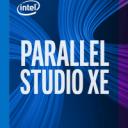 |
by MichaelS on (#3BB2P)
"Intel Parallel Studio 2018 has been designed to recognize the latest CPU architectures including the Intel Xeon Scalable processor family and the Intel Xeon Phi processors in order to get maximum performance from their differing architectures, yet remain binary compatible. With the recent introduction of the Intel AVX-512 vectorization instructions, application developers can more easily take advantage of these new instructions when developing and compiling with the Intel Parallel Studio 2018."The post Intel Parallel Studio 2018: Modernize Your Code appeared first on insideHPC.
|
 |
by Rich Brueckner on (#3BAZA)
Today the HPC Advisory Council announced that registration is now open for the Swiss HPC Conference. The event takes place April 9-12 in Lugano, Switzerland. For the first time, the conference will be held in concert with the Winter HPCXXL User Group meeting. "We are very excited to organize a joint conference here in Lugano, bringing together the communities of HPCAC and HPCXXL,†said Hussein Harake, HPC system manager, CSCS. “We believe that such a collaboration will offer a unique opportunity for HPC professionals to discuss and share their knowledge and experiences.â€The post Swiss HPC Conference Returns to Lugano in April with Winter HPCXXL User Group appeared first on insideHPC.
|
 |
by Rich Brueckner on (#3BAW1)
Sumit Gupta from IBM gave this talk at H2O World. "From chat bots, to recommendation engines, to Google Voice and Apple Siri, AI has begun to permeate our lives. We will demystify what AI is, present the difference between machine learning and deep learning, why the huge interest now, show some fun use cases and demos, and then discuss use cases of how deep learning based AI methods can be used to garner insights from data for enterprises. We will also talk about what IBM is doing to make deep learning and machine learning more accessible and useful to a broader set of data scientists, and how to build out the right hardware infrastructure."The post Video: Deep Learning for the Enterprise with POWER9 appeared first on insideHPC.
|
 |
by staff on (#3B7Z9)
Today HPC Advisory Council announced its 2018 Stanford HPC Conference will take place February 20-21, 2018 at Stanford University. The annual California-based conference draws world-class experts from all over the world for two days of thought leadership talks and immersive tutorials focusing on emerging trends with extensive coverage of AI, Data Sciences, HPC, Machine Learning and more. "The Stanford Conference is an intimate gathering of the global HPC community who come together to collaborate and innovate the way to the future,†said Steve Jones, Director of Stanford’s High Performance Computing Center. “SMEs, mentors, students, peers and professionals, representing a diverse range of disciplines, interests and industry, are drawn to the conference to learn from each other and leave collectively inspired to contribute to making the world a better place."The post Stanford HPC Conference Returns to Palo Alto in February appeared first on insideHPC.
|
 |
by Rich Brueckner on (#3B7VW)
The IEEE International Workshop on High-Performance Interconnection Networks in the Exascale and Big-Data Era (HiPINEB) has issued its Call for Papers. The event takes place February 25, 2018 in Vienna, Austria in conjunction with HPCA 2018 Conference. "The main goal of the fourth edition of HiPINEB is to gather and discuss in a full-day event the latest and most prominent efforts and advances, from both industry and academia, in the design and development of scalable high-performance interconnection networks, especially those oriented to meet the Exascale challenge and Big-data demands."The post Call for Papers: HiPINEB 2018 in Vienna appeared first on insideHPC.
|
 |
by staff on (#3B7RY)
In this special guest feature, Siddhartha Jana summarizes the key findings of the first-of-its-kind survey on Energy and Power Aware Job Scheduling and Resource Management. "The goal of this year-long survey was to investigate the active investments by HPC centers in enabling energy and power management within their software stack, especially the job schedulers and resource managers."The post First Global Survey of Energy and Power Aware Job Scheduling and Resource Management appeared first on insideHPC.
|
 |
by Rich Brueckner on (#3B7P6)
"HPC Cloud services built on the latest Intel architecture, Skylake Xeon processor, are now powering the C5 compute intensive instance at AWS and can serve as your next-generation HPC platform. Hear how customers are starting to consider hybrid strategies to increase productivity and lower their capital expenditure and maintenance costs. Also learn how to adapt this model to meet the increasing HPC and data analytics needs for your applications with the new technologies incorporated into the platform."The post Video: How to Get the HPC Best-in-class Performance via Intel Xeon Skylake appeared first on insideHPC.
|
 |
by staff on (#3B7KC)
The hardware and software for AI devices is rapidly evolving, so it is important to procure wisely for the future without incurring technology or vendor lock in. This post from an insideHPC Special Report focuses on AI software and how to best use and understand this rapidly expanding ecosystem.The post AI Software: Understanding the Rapidly Expanding Ecosystem appeared first on insideHPC.
|
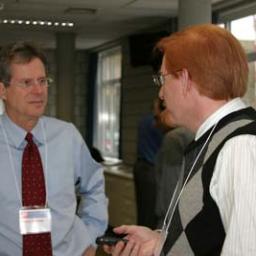 |
by staff on (#3B5KD)
Today Hyperion Research announced that it has completed an employee buyout and is now an independent company. "The team will continue all the worldwide activities that have made it the world’s most respected HPC industry analyst group for more than 25 years," said Steve Conway, senior vice president of research. "That includes sizing and tracking the global markets for HPC and high-performance data analysis (HPDA). We will also continue offering our subscription services, customer studies and papers, and operating the HPC User Forum."The post Hyperion Research Becomes Independent Company appeared first on insideHPC.
|
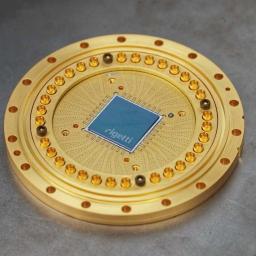 |
by Rich Brueckner on (#3B57T)
Over at Rigetti Computing, Will Zeng writes that the company has published a new white paper on unsupervised machine learning using 19Q, their new 19-qubit general purpose superconducting quantum processor. To accomplish this, they used a quantum/classical hybrid algorithm for clustering developed at Rigetti.The post New Paper looks at Unsupervised Machine Learning on Rigetti 19Q Quantum Computer appeared first on insideHPC.
|
 |
by Rich Brueckner on (#3B4XB)
In this video, Happy Sithole from CHPC introduces the team from South Africa that will travel to the Student Cluster Competition at ISC 2018 in Frankfurt. "Last week the local students came first in a national competition at the annual Centre for High Performance Computing conference in Pretoria. They will now compete next year with 11 other teams from abroad including China, Singapore, Thailand, Poland, and Germany."The post Video: South Africa to Compete in ISC 2018 Student Cluster Competition appeared first on insideHPC.
|
 |
by staff on (#3B4SR)
In this special guest feature from Scientific Computing World, Robert Roe writes that the EuroExa project has Europe on the road to Exascale computing. "Ultimately, the goals for exascale computing projects are focused on delivering and supporting an exascale-class supercomputer, but the benefits have the potential to drive future developments far beyond the small number of potential exascale systems. Projects such as EuroExa and the Exascale Computing Project in the US could have far-reaching benefits for smaller-scale HPC systems."The post EuroExa Project puts Europe on the Road to Exascale appeared first on insideHPC.
|
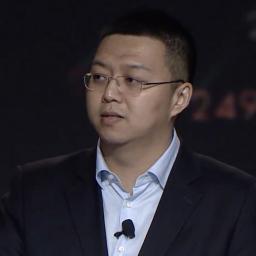 |
by Rich Brueckner on (#3B4GW)
Haohuan Fu gave this Invited Talk at SC17 in Denver. "The Sunway TaihuLight supercomputer is the world's first system with a peak performance greater than 100 PFlops and a parallel scale of over 10 million cores. Different from other existing heterogeneous supercomputers, the system adopts its unique design strategies in both the architecture of its 260-core Shenwei CPU and its way of integrating 40,960 such CPUs as 40 powerful cabinets. This talk will first introduce and discuss design philosophy about the approach to integrate these 10 million cores, at both the processor and the system level."The post Lessons on Integrating and Utilizing 10 Million Cores: Experience of Sunway TaihuLight appeared first on insideHPC.
|
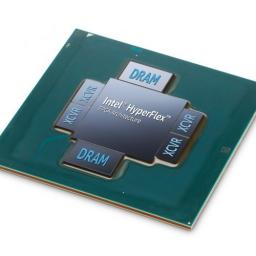 |
by staff on (#3B22M)
Today Intel announced the availability of the Intel Stratix 10 MX FPGA, the industry’s first field programmable gate array (FPGA) with integrated High Bandwidth Memory DRAM (HBM2). "To efficiently accelerate these workloads, memory bandwidth needs to keep pace with the explosion in data†said Reynette Au, vice president of marketing, Intel Programmable Solutions Group. “We designed the Intel Stratix 10 MX family to provide a new class of FPGA-based multi-function data accelerators for HPC and HPDA markets.â€The post Intel Unveils Industry’s First FPGA Integrated with HBM Memory appeared first on insideHPC.
|
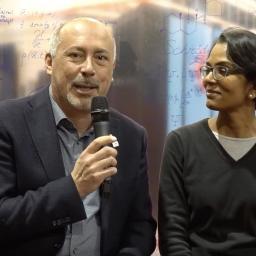 |
by Rich Brueckner on (#3B1N9)
In this video, Nages Sieslack from ISC 2018 and Michele De Lorenzi from PASC18 invite you to join both conferences next summer. "ISC High Performance and the PASC Conference are pleased to announce that ISC 2018 and PASC18, two major events in the European HPC ecosystem, are scheduled back-to-back at the end of June and beginning of July 2018."The post Video: Meet in Europe for ISC 2018 and PASC18 Conferences appeared first on insideHPC.
|
 |
by staff on (#3B1JD)
Scientists from the Jülich Supercomputing Centre in Germany have set a new world record--simulating a quantum computer with 46 quantum bits – or qubits – for the first time. For their calculations, the scientists used the Jülich supercomputer JUQUEEN as well as the world’s fastest supercomputer Sunway TaihuLight at China’s National Supercomputing Center in Wuxi.The post Jülich Simulates World Record 46 Qubit Quantum Computer appeared first on insideHPC.
|
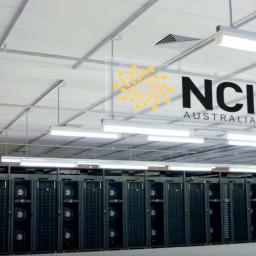 |
by staff on (#3B1JF)
Today the Australian Government announced plans to invest $70 million for a new supercomputer at the The Board of Australia’s National Computational Infrastructure (NCI). The funding will be used to replace NCI’s aging Raijin supercomputer. "“The NCI supercomputer is one of the most important pieces of research infrastructure in Australia"The post NCI in Australia to Deploy $70 Million Supercomputer appeared first on insideHPC.
|
 |
by Rich Brueckner on (#3B1F6)
In this video from SC17, Peter Lyu from Rescale demonstrates how the company brings HPC Workloads to the Cloud. "Rescale helps customers shift from complex on-premise workflows to an easy-to-use web-based engineering SaaS workflow; Workflow variety: Rescale supports all types of workflows including multidisciplinary exploration, optimizations, design of experiments, and more."The post Rescale Demonstrates Easy HPC Cloud Management at SC17 appeared first on insideHPC.
|
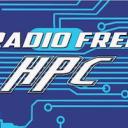 |
by Rich Brueckner on (#3AZ36)
In this podcast, the Radio Free HPC team looks at the FCC's move to abolish Net Neutrality regulations put in place during the Obama administration. Dan thinks this is a good move to remove unnecessary regulations, but rest of the crew is worried about where this will lead the future of the Internet.The post Radio Free HPC Says Goodbye to Net Neutrality appeared first on insideHPC.
|
 |
by Rich Brueckner on (#3AZ1C)
In this video from SC17, Mike Vildibill from Hewlett Packard Enterprise describes the company's experiences engaging large HPC customers with prototype systems and highlight the value and benefit of running SUSE on the Apollo 70 platform. "Coming soon, the HPE Apollo70: is a powerful HPC platform. It offers a disruptive ARM HPC processor technology with maximum memory bandwidth, familiar management and performance tools, and the density and scalability required for large HPC cluster deployments."The post Video: Arm on the Path to Exascale appeared first on insideHPC.
|
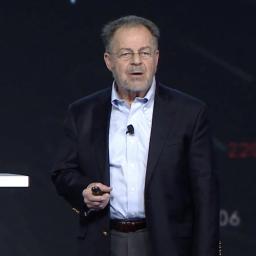 |
by Rich Brueckner on (#3AWTQ)
Paul Messina from Argonne gave this Invited Talk at SC17. "Balancing evolution with innovation is challenging, especially since the ecosystem must be ready to support critical mission needs of DOE, other Federal agencies, and industry, when the first DOE exascale systems are delivered in 2021. The software ecosystem needs to evolve both to support new functionality demanded by applications and to use new hardware features efficiently. We are utilizing a co-design approach that uses over two dozen applications to guide the development of supporting software and R&D on hardware technologies as well as feedback from the latter to influence application development.The post The U.S. D.O.E. Exascale Computing Project – Goals and Challenges appeared first on insideHPC.
|
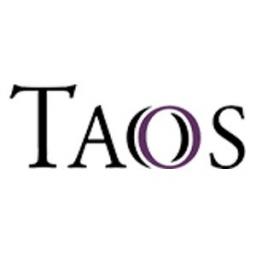 |
by Rich Brueckner on (#3AWTS)
Taos is immediately hiring a HPC Systems Engineer for a cutting-edge tech company in Sunnyvale, CA! We're changing the face of some of the most innovative companies with our diverse solution offerings, exceptional talent and thought leadership. Our clients look to us first for advice, insight, and support, driving us to relentlessly focus on customer success.The post Job of the Week: HPC Systems Engineer at Taos appeared first on insideHPC.
|
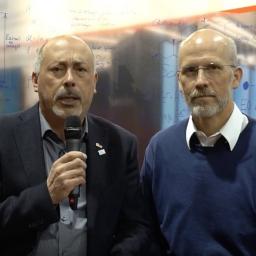 |
by staff on (#3AT9V)
PASC18 is soliciting high-quality original research papers related to scientific computing in any of the eight scientific domains represented at the conference (chemistry and materials, life sciences, physics, climate and weather, solid earth dynamics, engineering, computer science and applied mathematics, and emerging application domains). Papers that address aspects emphasizing the close coupling of data and computation in current and future high performance computing applications – as indicated by the theme of PASC18: Fast and Big Data, Fast and Big Computation – are particularly welcome.The post Video: Introduction to PASC18 Paper Track appeared first on insideHPC.
|
 |
by Rich Brueckner on (#3AT9X)
Researchers are using the Blue Waters supercomputer at NCSA to process new data from NASA’s Terra Satellite. Approximately the size of a small school bus, the Terra satellite explores the connections between Earth’s atmosphere, land, snow and ice, ocean, and energy balance to understand Earth’s climate and climate change and to map the impact of human […]The post Blue Waters Supercomputer Crunches Data from NASA’s Terra Satellite appeared first on insideHPC.
|
 |
by staff on (#3AT6W)
The MontBlanc 2020 project launched this week in Europe. As a sequel to a set of successful research projects into energy-efficient ARM-based computing, MontBlanc 2020 now begins an ambitious reach for Exascale. "The ambition of the consortium is to quickly industrialize our research. This is why we decided to rely on the Arm instruction set architecture (ISA), which is backed by a strong software ecosystem. By leveraging the current efforts, including the Mont-Blanc ecosystem and other international projects, we will benefit from the system software and applications required for successful usage†explained Said Derradji, Atos, coordinator of the Mont-Blanc 2020 project."The post Atos Kicks off MontBlanc 2020 Project for Exascale appeared first on insideHPC.
|
 |
by staff on (#3AT3M)
Today BP announced that it has more than doubled the total computing power of its Center for High-Performance Computing (CHPC) in Houston, making it the most powerful supercomputer in the world for commercial research. "Our investment in supercomputing is another example of BP leading the way in digital technologies that deliver improved safety, reliability and efficiency across our operations and give us a clear competitive advantage,†said Ahmed Hashmi, BP’s head of upstream technology."The post HPE Powers World’s Most Powerful Commercial Supercomputer at BP appeared first on insideHPC.
|
 |
by Rich Brueckner on (#3AT12)
Gordon Bell gave this Invited Talk at SC17. "A globally recognized pioneer in the supercomputing world, Bell will be sharing his latest reflections and insights with his fellow scientists, engineers and researchers at SC17 in Denver. Bell will highlight the work of the winners of the ACM Gordon Bell Prize from the past 30 years. Presented by the ACM, the recipients’ achievements have chronicled the important innovations and transitions of high performance computing, including the rise of parallel computing, a computing architecture that breaks down problems into smaller ones that may be solved simultaneously."The post SC17 Invited Talk: Gordon Bell on the Rise of Scalable Systems appeared first on insideHPC.
|
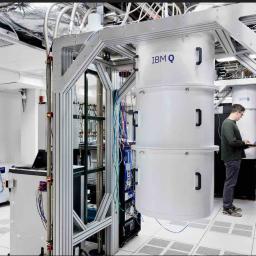 |
by staff on (#3AQNB)
Today IBM announced the first clients to tap into its IBM Q early-access commercial quantum computing systems to explore practical applications important to business and science. In all, twelve initial organizations joined to foster a growing quantum computing ecosystem based on IBM’s open source quantum software and developer tools.The post Fortune 500 Firms Join IBM Q Network for Quantum Computing Research appeared first on insideHPC.
|
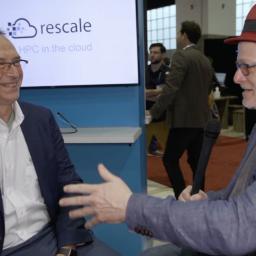 |
by Rich Brueckner on (#3AQ8R)
In this video from SC17, Gabriel Broner from Rescale describes how the company brings HPC Workloads to the Cloud. "Rescale offers HPC in the cloud for engineers and scientists, delivering computational performance on-demand. Using the latest hardware architecture at cloud providers and supercomputing centers, Rescale enables users to extend their on-premise system with optimized HPC in the cloud."The post Rescale Brings HPC Workloads to the Cloud at SC17 appeared first on insideHPC.
|
 |
by Rich Brueckner on (#3APZK)
In this slidecast, Dr. Rosemary Francis describes the new Ellexus Container Checker, a pioneering cloud-based tool that provides visibility into the inner workings of Docker containers. "Container Checker will help people using cloud platforms to quickly detect problems within their containers before they are let loose on the cloud to potentially waste time and compute spend. Estimates suggest that up to 45% of cloud spend is wasted due in part to unknown application activity and unsuitable storage decisions, which is what we want to help businesses tackle.â€The post Slidecast: HPC and the Cloud – Announcing the Ellexus Container Checker appeared first on insideHPC.
|
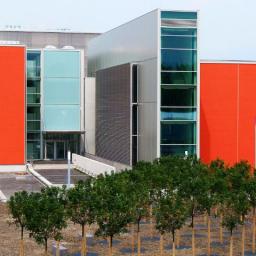 |
by staff on (#3APZM)
"Upon its completion in late 2018, the new Lenovo supercomputer (called SuperMUC-NG) will support LRZ in its groundbreaking research across a variety of complex scientific disciplines, such as astrophysics, fluid dynamics and life sciences, by offering highly available, secure and energy-efficient high-performance computing services that leverage industry-leading technology optimized to address the a broad range of scientific computing applications. The LRZ installation will also feature the 20-millionth server shipped by Lenovo, a significant milestone in the company’s data center history."The post Lenovo to Build 26.7 Petaflop SuperMUC-NG Cluster for LRZ in Germany appeared first on insideHPC.
|
 |
by Richard Friedman on (#3APW6)
Some deep learning applications tend to have very complex graphs with thousands of nodes and edges. To make it easier to visualize, analyze, design, and tune such complex parallel applications employing Intel TBB flow graphs, Intel provides Intel Advisor Flow Graph Analyzer (Intel FGA). It gives developers a comprehensive set of tools to examine, debug, and analyze Intel TBB flow graphs.The post Intel Advisor’s TBB Flow Graph Analyzer: Making Complex Layers of Parallelism More Manageable appeared first on insideHPC.
|
 |
by Rich Brueckner on (#3APS7)
In this video from SC17 in Denver, Dr. Eng Lim Goh describes the spaceborne supercomputer that HPE built for NASA. "The research objectives of the Spaceborne Computer include a year-long experiment of operating high performance commercial off-the-shelf (COTS) computer systems on the ISS with its changing radiation climate. During high radiation events, the electrical power consumption and, therefore, the operating speeds of the computer systems are lowered in an attempt to determine if such systems can still operate correctly."The post Dr. Eng Lim Goh on HPE’s Spaceborne Supercomputer appeared first on insideHPC.
|
 |
by Rich Brueckner on (#3AM53)
In this video, researchers from CINECA in Italy describe how their new D.A.V.I.D.E. supercomputer powers science and engineering. "Developed by E4 Engineering, D.A.V.I.D.E. (Development for an Added Value Infrastructure Designed in Europe) is an Energy Aware Petaflops Class High Performance Cluster based on Power Architecture and coupled with NVIDIA Tesla Pascal GPUs with NVLink."The post A Closer Look at the D.A.V.I.D.E. Supercomputer at CINECA in Italy appeared first on insideHPC.
|
 |
by Rich Brueckner on (#3AKVT)
In this video from the DDN User Group at SC17, Dr. Peter Clapham from Wellcome Trust Sanger Institute presents: Experiences in providing secure multi-tenant Lustre access to OpenStack. “If you need 10,000 cores to perform an extra layer of analysis in an hour, you have to scale a significant cluster to get answers quickly. You need a real solution that can address everything from very small to extremely large data sets.â€The post Experiences in providing secure multi-tenant Lustre access to OpenStack appeared first on insideHPC.
|
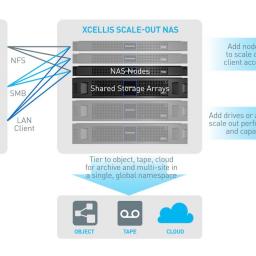 |
by staff on (#3AKVW)
There is a gap in the market between NAS systems designed for enterprise data management and HPC solutions designed for data-intensive workloads," said Molly Presley, vice president, Global Marketing, Quantum. "Xcellis Scale-out NAS fills this gap with the features needed by enterprises and the performance required by HPC in a single solution. Xcellis uniquely delivers capacity with the economics of tape and cloud and integrated AI for advanced data insights and can even support traditional block storage demands within the same platform.â€The post Quantum Launches Scale-out NAS for High-Value and Data-Intensive Workloads appeared first on insideHPC.
|
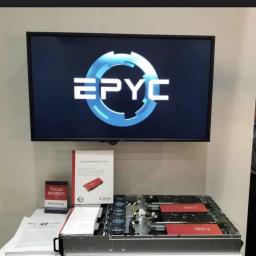 |
by staff on (#3AKNX)
“Baidu’s mission is to make a complex world simpler through technology, and we are constantly looking to discover and apply the latest cutting-edge technologies, innovations, and solutions to business. AMD EPYC processors provide Baidu with a new level of energy efficient and powerful computing capability.â€The post Baidu Deploys AMD EPYC Single Socket Platforms for ‘ABC’ Datacenters appeared first on insideHPC.
|
 |
by Sarah Rubenoff on (#3AKKD)
In a special report, Intel offers details on use cases that explore AI systems and those designed to learn in a limited information environment. "AI systems that can compete against and beat humans in limited information games have great potential, because so many activities between humans happen in the context of limited information such as financial trading and negotiations and even the much simpler task of buying a home."The post AI Systems Designed to Learn in a Limited Information Environment appeared first on insideHPC.
|
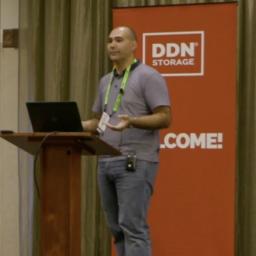 |
by Rich Brueckner on (#3AH37)
Jake Carroll from The Queensland Brain Institute gave this talk at the DDN User Group. "The Metropolitan Data Caching Infrastructure (MeDiCI) project is a data storage fabric developed and trialled at UQ that delivers data to researchers where needed at any time. The “magic†of MeDiCI is it offers the illusion of a single virtual data centre next door even when it is actually distributed over potentially very wide areas with varying network connectivity."The post MeDiCI – How to Withstand a Research Data Tsunami appeared first on insideHPC.
|
 |
by staff on (#3AGZ9)
Researchers at the DOE are looking to dramatically increase their data transfer capabilities with the Petascale DTN project. "The collaboration, named the Petascale DTN project, also includes the National Center for Supercomputing Applications (NCSA) at the University of Illinois in Urbana-Champaign, a leading center funded by the National Science Foundation (NSF). Together, the collaboration aims to achieve regular disk-to-disk, end-to-end transfer rates of one petabyte per week between major facilities, which translates to achievable throughput rates of about 15 Gbps on real world science data sets."The post Speeding Data Transfer with ESnet’s Petascale DTN Project appeared first on insideHPC.
|
 |
by staff on (#3AGV9)
In this special guest feature, Siddhartha Jana provides an update on cross-community efforts to improve energy efficiency in the software stack. The article covers events at SC17 that focused on energy efficiency and highlights ongoing collaborations across the community to develop advanced software technologies for system energy and power management.The post From SC17: Energy Efficiency in the Software Stack — Cross Community Efforts appeared first on insideHPC.
|
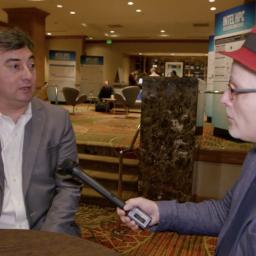 |
by Rich Brueckner on (#3AGHD)
In this video from the Intel HPC Developer Conference, Simon Warfield from Boston Children's Hospital describes how radiology is being transformed with 3D and 4D MRI technology powered by AI and HPC. "A complete Diffusion Compartment Imaging study can now be completed in 16 minutes on a workstation, which means Diffusion Compartment Imaging can now be used in emergency situations, in a clinical setting, and to evaluate the efficacy of treatment. Even better, higher resolution images can be produced because the optimized code scales."The post Moving Radiology Forward with HPC at Boston Children’s Hospital appeared first on insideHPC.
|